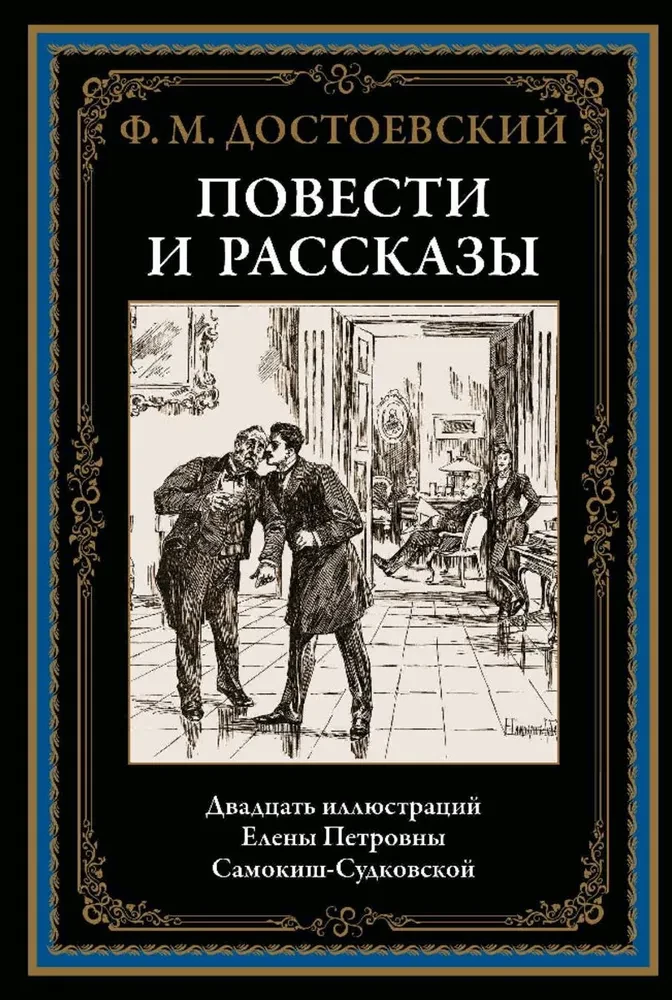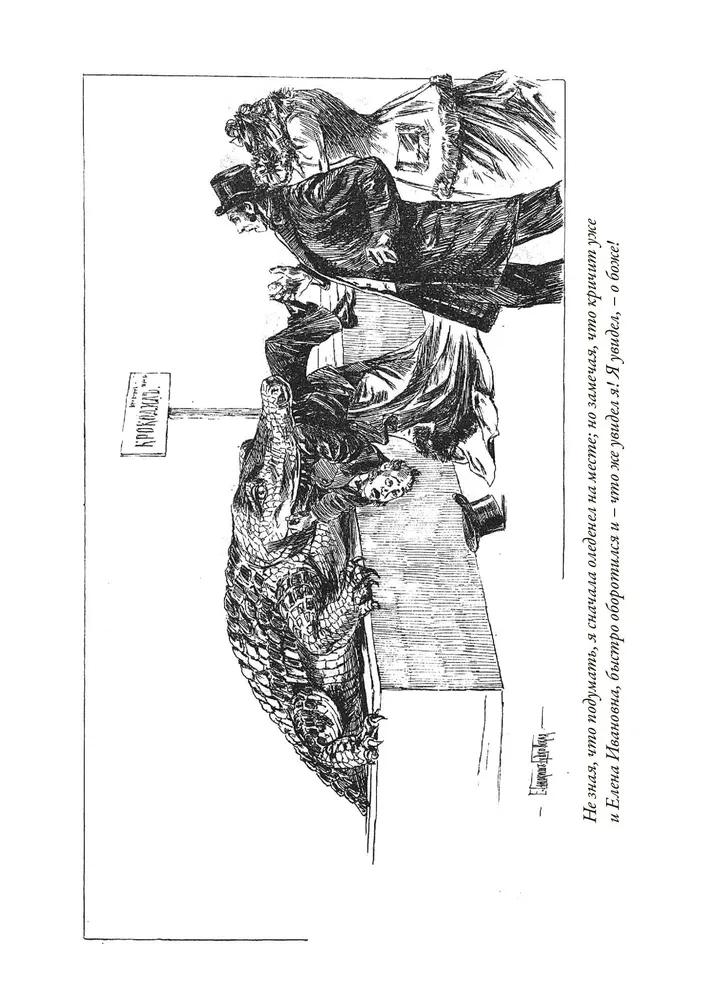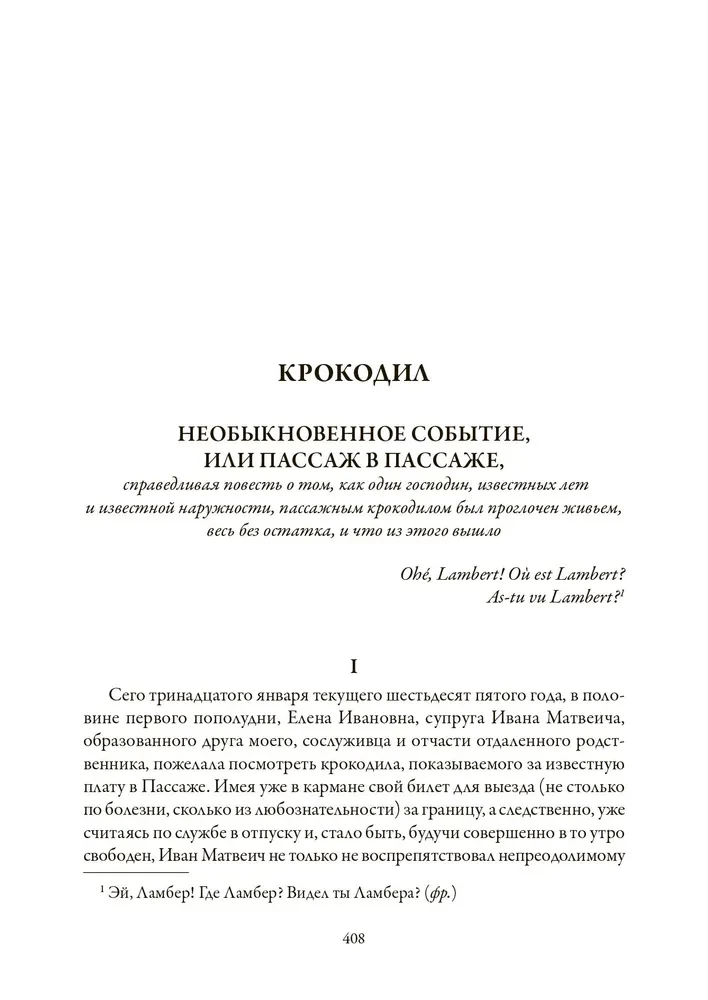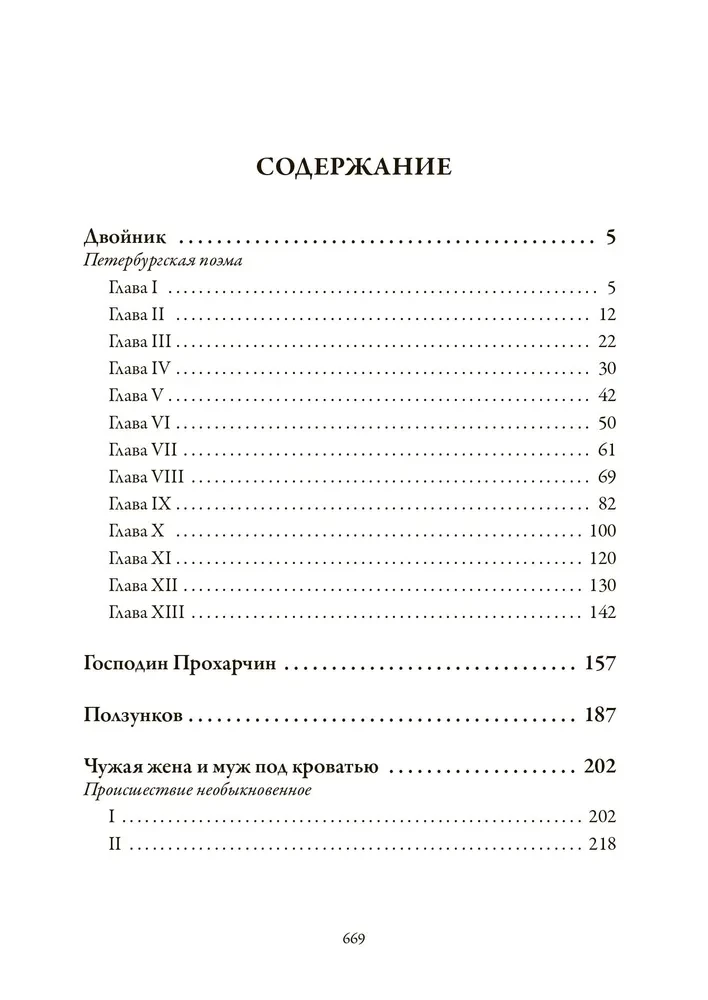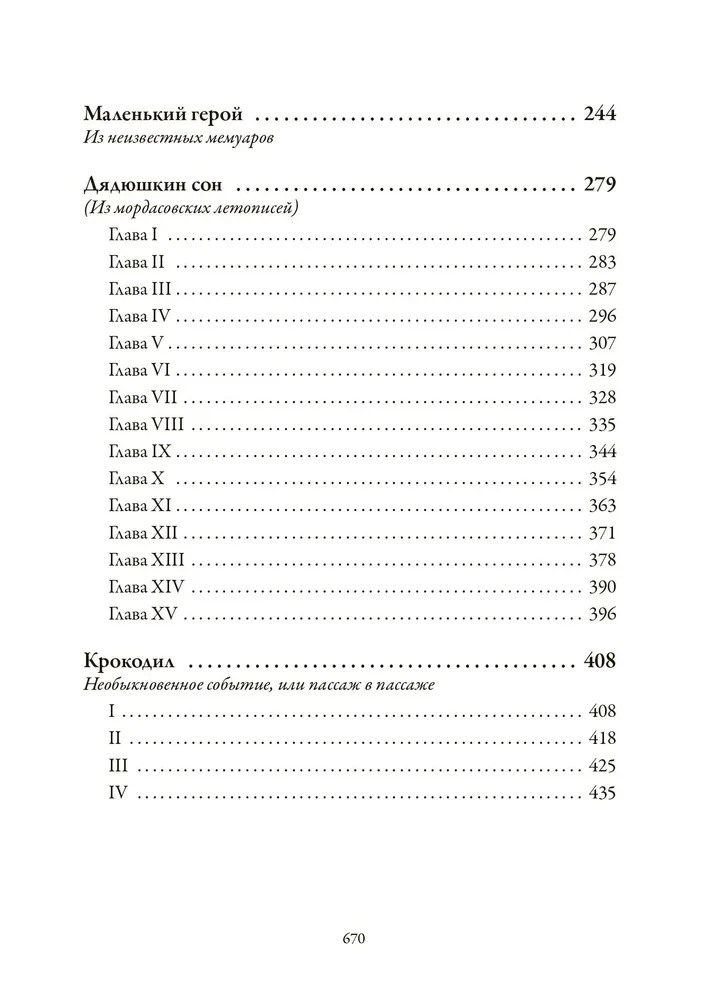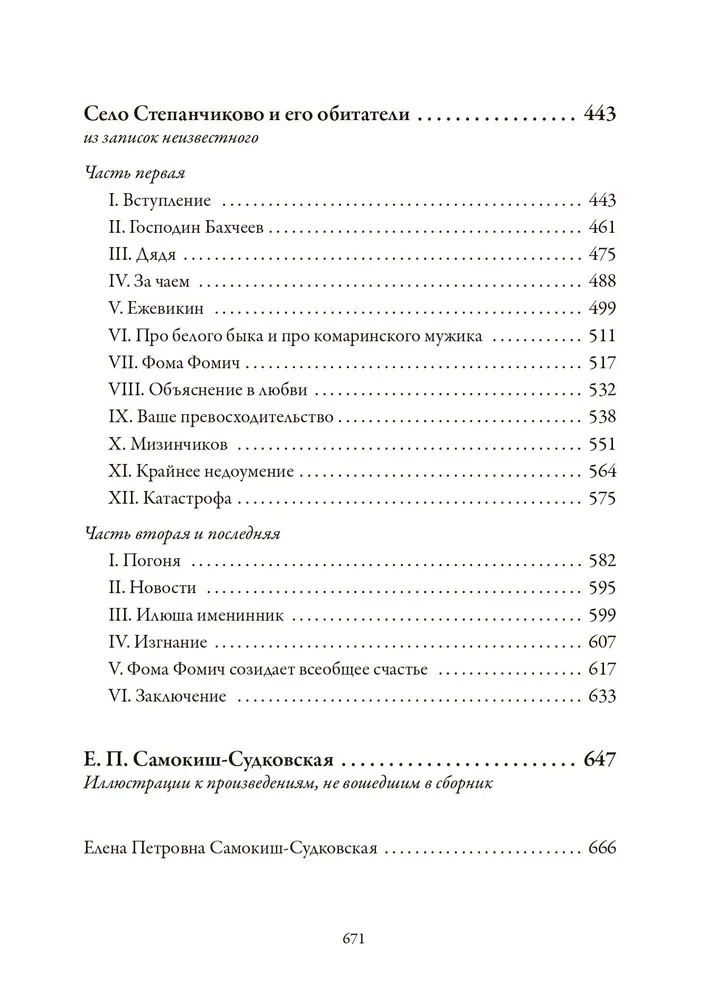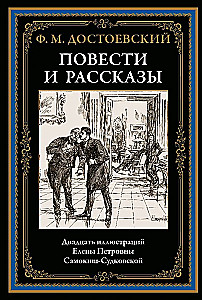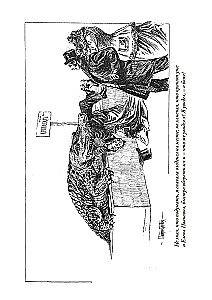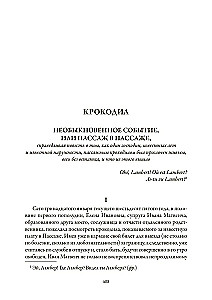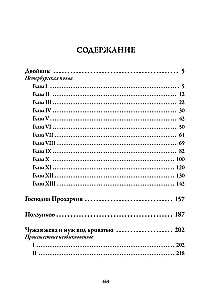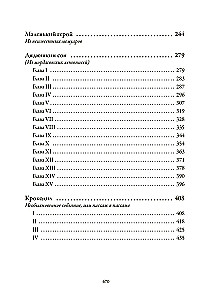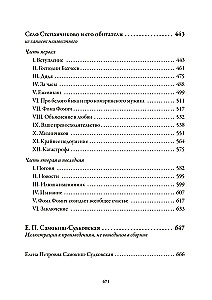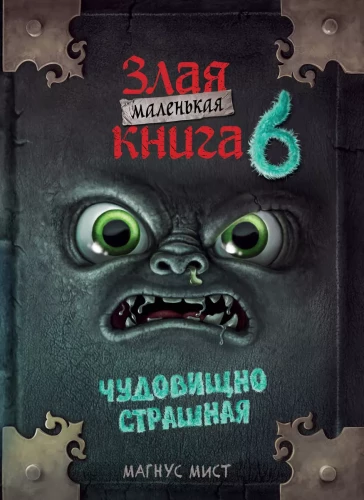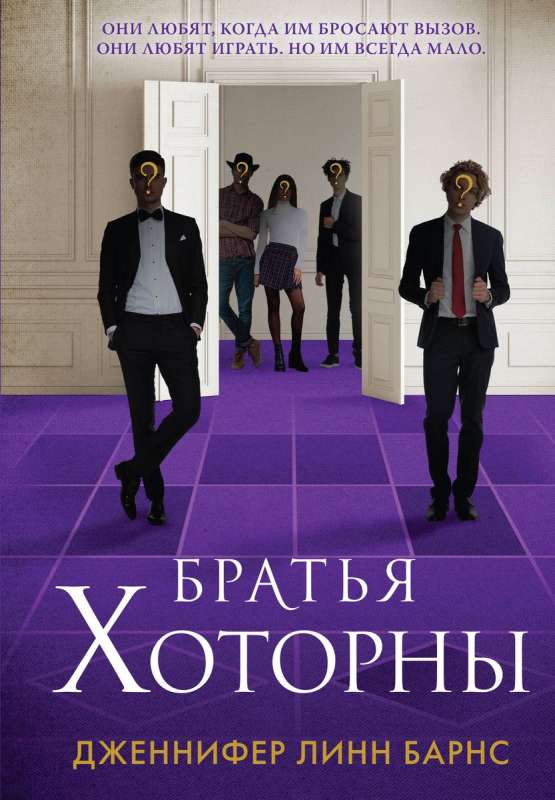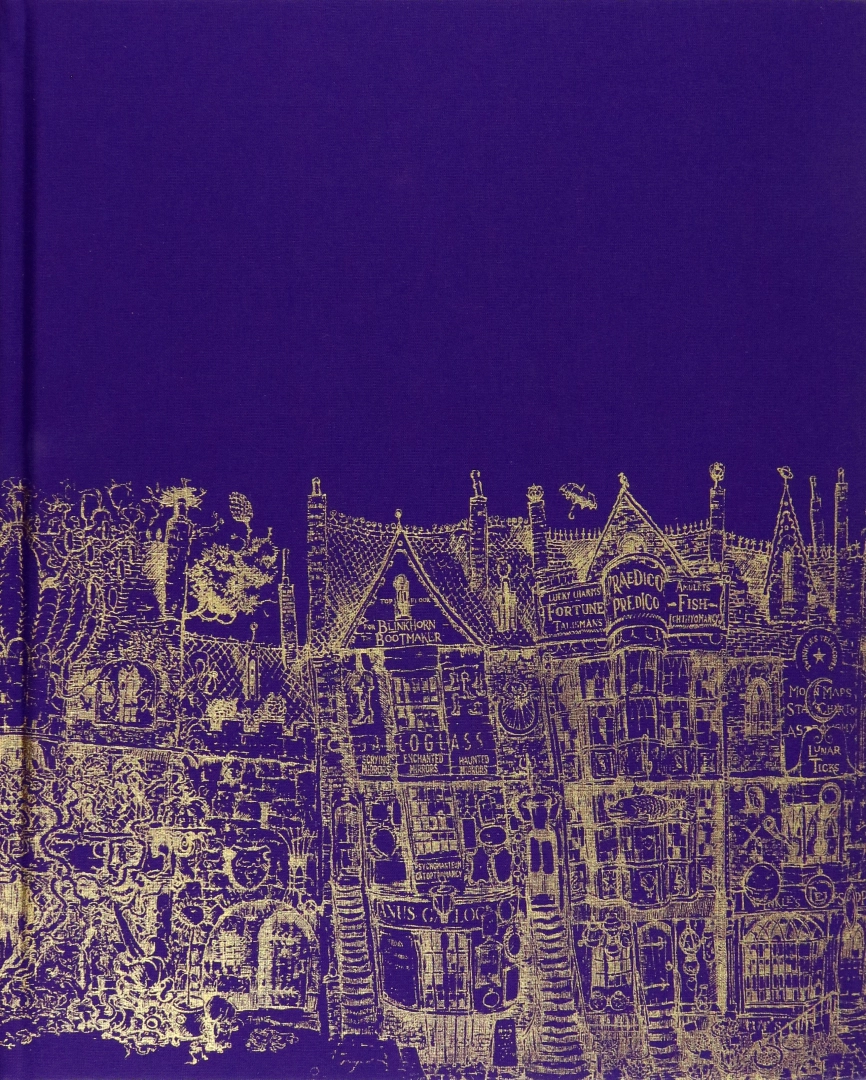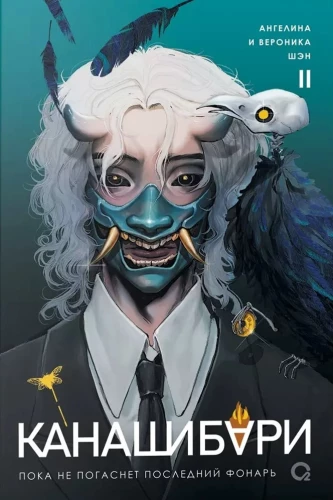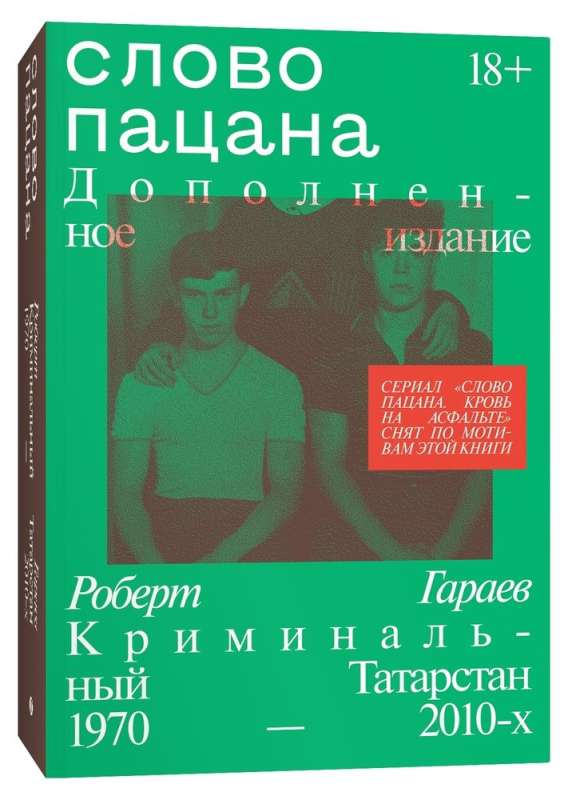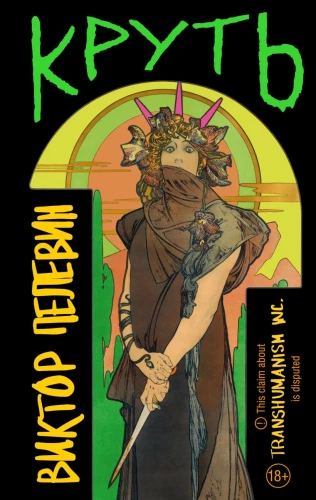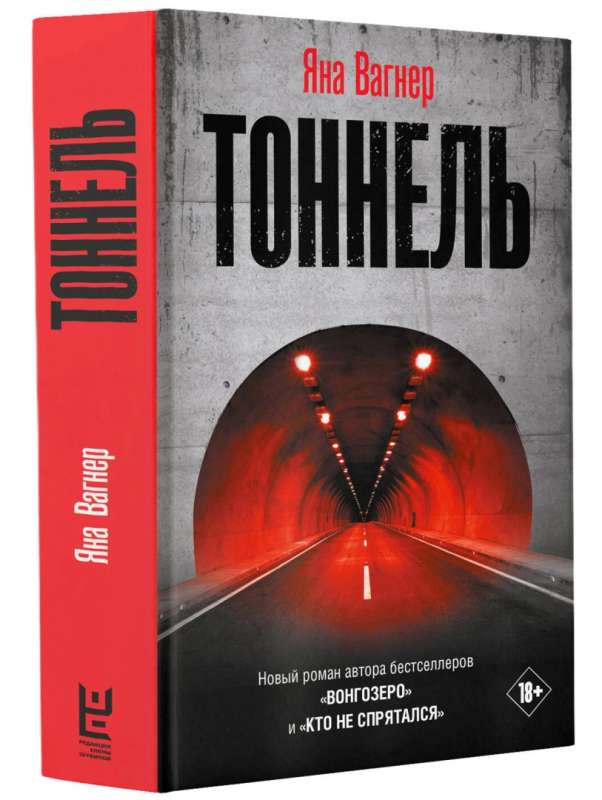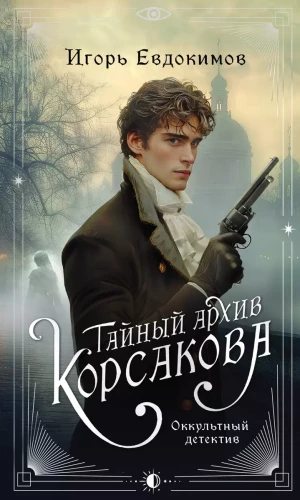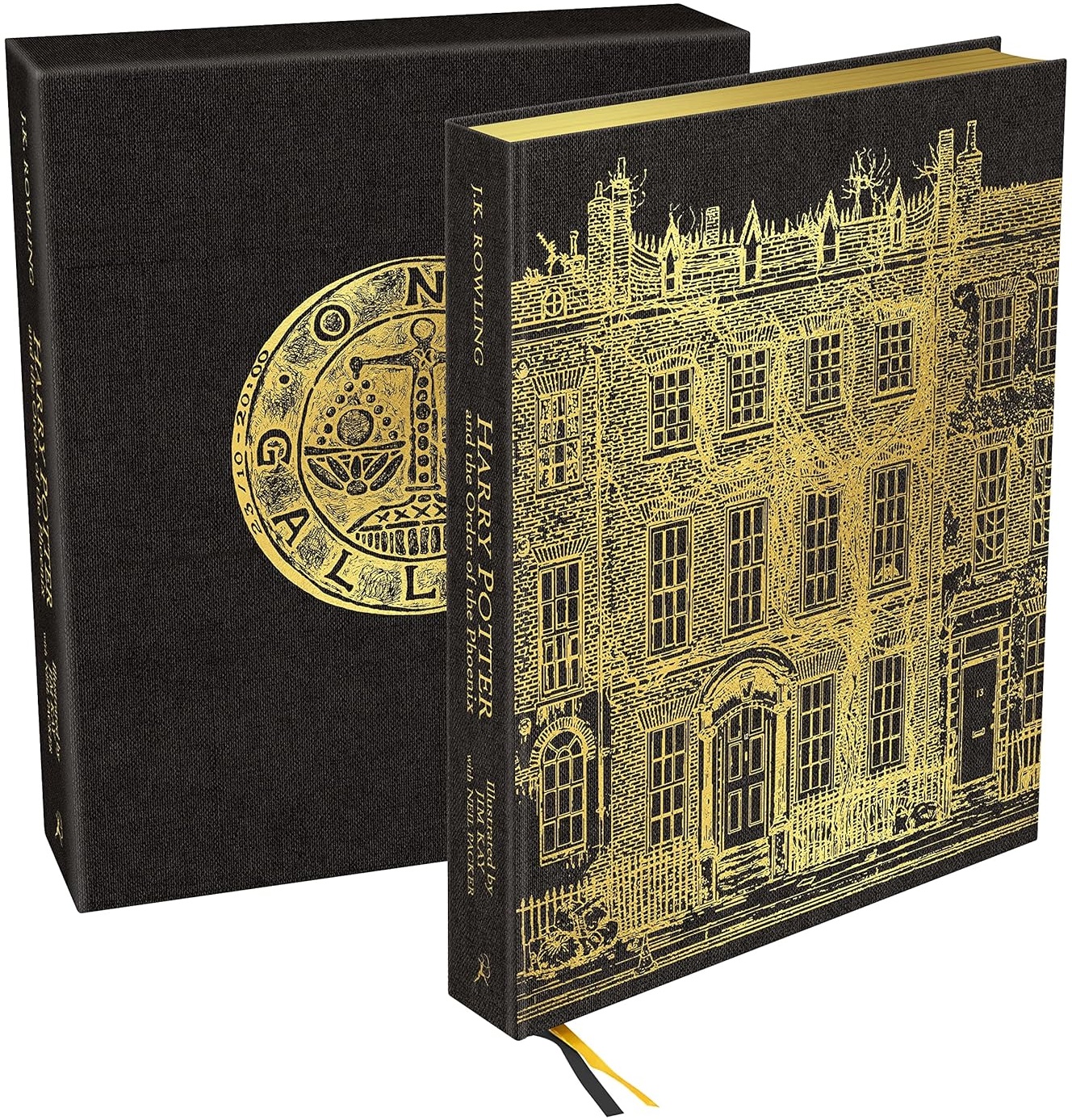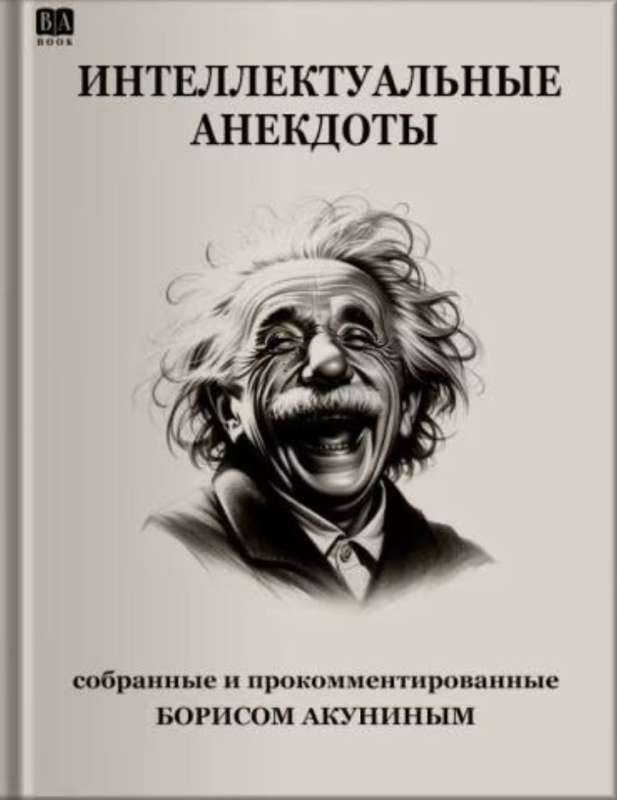Stories and Tales
You can familiarize yourself with the entire book in electronic form by following the link on the SZKEO website. The gift illustrated edition is printed on domestic pigmented cream-colored paper with a ribbon bookmark of the same color as the... headband. The collection includes seven novellas by the world-famous Russian classic F. M. Dostoevsky: "The Double", "Mr. Prokharchin", "The Crocodile", "The Other's Wife and Her Husband Under the Bed", "The Little Hero", "The Crocodile", "The Village of Stepanchikovo and Its Inhabitants". At the end of the publication, there is an article about the life and work of Elena Petrovna Samokish-Sudkovskaya, whose drawings adorn this book, as well as her illustrations for other works by Dostoevsky that are not included in this collection. The novellas and stories included in the collection were written by Dostoevsky between 1846 and 1861. In them, Fyodor Mikhailovich develops the theme of "little people", which is so important in his creativity. Constrained life circumstances sometimes fatally affect the psyche of his characters, often pushing them towards almost deviant behavior. Fearing an unpredictable future, the semi-bankrupt official Prokharchin saves money in the mattress on which he ends his days. The consciousness of the protagonist of the novella "The Double" splits, creating its own phantom personality. In the novella "The Village of Stepanchikovo and Its Inhabitants", the despot Foma Fomich compensates for his inadequacy by terrorizing those around him. In "The Other's Wife...", a comical situation turns into a tragicomedy. Social humiliation sometimes drives Dostoevsky's heroes to don the masks of jesters; these masks allow them to hide their own tears and emotional pain. Humor in Dostoevsky is often the humor of tragedy, where laughter struggles with tears against the backdrop of bitter irony and sarcasm. The works in the collection are adorned with illustrations by Elena Petrovna Samokish-Sudkovskaya. These and other illustrations of hers for the writer's works were published in 1895 as a separate album "The Humor of F. M. Dostoevsky". This album served as a free supplement to the magazine "The Splinters". The future artist was born in February 1862 in the family of a hereditary military engineer. She studied at the famous Pavlovsk Women's Institute and at the Helsingfors Art School under the renowned painter Vasily Petrovich Vereshchagin. From 1882 to 1890, Elena Petrovna lived in Paris, studying in the studio of Jules Bastien-Lepage. Her passion for painting brought her together with her future husband, the talented maritime painter Rufim Gavrilovich Sudkovsky. Unfortunately, just two years after their wedding, Rufim Gavrilovich was taken to the grave by typhus. Elena Petrovna mourned terribly. A few years later in St. Petersburg, she met her second future husband, the master of battle painting, academician Nikolai Semyonovich Samokish. At that time, Elena Petrovna was passionate about modernism. She gained wide acclaim as an illustrator of children's books and works by classical authors. Many remember her illustrations for "Eugene Onegin". Her illustrations for "The Humpbacked Horse" also became widely known. The couple worked together on the illustrations for "Dead Souls". The revolution of 1917 separated them to different sides of the barricades. Nikolai Semyonovich created his own art studio in Simferopol, while his wife moved to her beloved Paris, getting lost among numerous other Russian emigrants.
Author: Фёдор Достоевский
Printhouse: SZKEO
Series: Библиотека мировой литературы
Age restrictions: 16+
Year of publication: 2023
ISBN: 9785960308663
Number of pages: 656
Size: 245x172x55 mm
Cover type: hard
Weight: 976 g
Delivery methods
Choose the appropriate delivery method
Pick up yourself from the shop
0.00 £
Courier delivery
